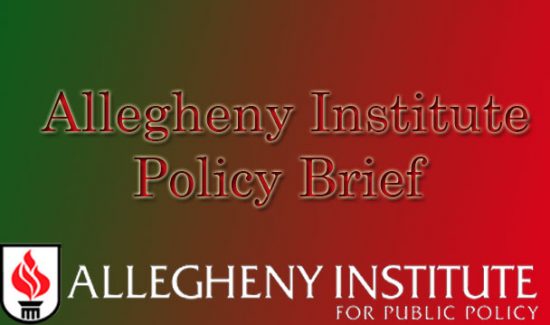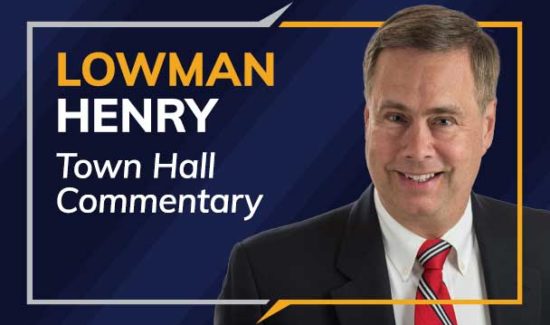V&V Q&A: On Fed Distortions and Bailouts
Editor’s Note: The "V&V Q&A" is an e-publication from The Center for Vision & Values at Grove City College. Each issue will present an interview with an intriguing thinker or opinion-maker that we hope will prove illuminating to readers everywhere. In this latest edition, Dr. Paul Kengor, the executive director of The Center, interviews Dr. Jeffrey M. Herbener, the chair of the department of economics at Grove City College and fellow for economic theory & policy with The Center, on the topic of economic booms and busts. This is one of an ongoing series of interviews on the current economic crisis with Jeff Herbener.
Dr. Paul Kengor: Dr. Herbener, picking up from our last interview, tell us how credit expansion by the Fed distorts what things are really worth in an economy.
Dr. Jeffrey Herbener: The economy is a vast structure of the production of inter-related capital and consumer goods. The viability of these different production processes is determined by the pattern of spending or demands that people have. If consumers demand, say, the Toyota Prius more heavily, the increased sales will generate more revenue for Toyota. The additional revenue provides the funds Toyota needs to buy more inputs to increase production to satisfy the greater demand. Toyota’s additional demand for, say, the batteries used in the Prius’ hybrid engine, provide more revenue to Panasonic EV Energy Company. Then Panasonic EV can use its greater revenue to buy more of its inputs, and so on.
When the Fed stimulates monetary inflation and credit expansion, the patterns of demand are shifted toward capital and consumer goods that people borrow money to buy. Consumers borrow more money to spend on houses and automobiles. Entrepreneurs borrow more money to buy factories and equipment. This additional spending makes not only housing, automobile, factory, and equipment production more profitable, but the production of the inputs used to produce these goods, like steel, lumber, cement, and the inputs to produce them, and so on. The result of the new patterns of demands is a lengthening of the entire structure of production.
Kengor: Applying this to the Prius example, what happens next, during the boom?
Herbener: The expansion of credit not only increases consumer demand for the Prius, but makes it feasible for Toyota to finance a new Prius factory. There is now more demand for steel not only to build more cars but to build more auto factories. Because demands are not falling in other steel-using production, the steel producers will find it profitable not to merely divert steel from other uses into autos and auto factories, but to increase steel production overall. To do so, they must buy more iron. For similar reasons, iron producers will increase iron production. Resources are diverted into opening more iron mines, building more mining equipment, and producing more steel mills and equipment to produce steel. This buildup of the capital structure in the economy lengthens out production processes. Before the capital buildup, the time and resources used to produce more Priuses followed this path: iron was mined, steel was produced, fenders were made, and the Priuses were assembled in existing factories. During the capital buildup, the time and resources used to produce additional Priuses followed this path: iron was mined, steel was produced, steel girders were made, a Prius factory was assembled, more iron was mined, more steel was produced, steel fenders were made, and additional Priuses were assembled in the new factory. The latter process takes longer and employs more resources in building up capital capacity to produce capital goods like iron and steel.
Kengor: This eventually leads to a bust, right? Because the boom can’t be sustained?
Herbener: The reason that these lengthened-out production processes cannot be profitability sustained is that they are inconsistent with the preferences people have to save and invest. To illustrate, suppose people desire to save and invest 10 percent of their incomes. If they produce $15 trillion in income a year, then they will save and invest $1.5 trillion. This saving and investing funds the process of capital accumulation. Now suppose the Fed increases bank reserves to the extent that banks create an additional $1 trillion in loans and un-backed checkable deposits. Instead of $1.5 trillion in funding capital accumulation, which is the amount people prefer at 10 percent of their incomes, there is $2.5 trillion, or almost 17 percent of income. But people do not want such a large portion of resources to go to opening more mines, building more factories, and so on. They want a smaller portion going into longer processes of capital accumulation and a larger portion going into shorter production process to make consumer goods sooner.
Kengor: How do people react to this distortion done by the Fed?
Herbener: People adjust to the Fed induced distortion in the following way: The additional lending made possible by bank-credit creation is the source of more spending later on, and thus, more production in lengthening the capital structure. The new money is earned as income by the producers of goods in expanding lines of production: steel workers, shareholders of mining companies, and so on. These producers, then, save and invest their new income in the preferred ratio of 10 percent. Each time the new money is spent to buy another input in the production process, the producers of that input earn more income and save and invest as they prefer. At the end of the process, income increases to, say, $17.5 trillion, of which $1.75 trillion, or 10 percent, is saved and invested. Although the Fed can produce additional money through the credit markets (and, thereby, artificially increase the supply of credit), people disburse the additional income it generates according to their preferences. As a result, entrepreneurs find it profitable to restore the capital structure people prefer.
Kengor: How do we get out of the current mess?
Herbener: The market economy, unhampered by government intervention, efficiently arranges production to satisfy people’s preferences. Entrepreneurs can make efficient production decisions because they are guided and constrained by profit and loss. They can estimate the effect each production decision has on their profit and they earn profit if their decisions are successful and suffer loss if they are unsuccessful. If Toyota and Honda correctly anticipate that consumer demand will be shifting away from gas-guzzling SUVs and toward gas-sipping hybrids, then their decisions to produce more Priuses and Insights will earn profit. If instead consumers buy more crossovers, then Toyota and Honda will suffer losses from producing more hybrids. Since entrepreneurs’ income rises and falls as they earn profits and suffer losses, they seek the former and avoid the latter. There is no other method to make production conform to people’s preferences. The abject failure of socialism in the 20th century amply demonstrated that government officials have neither the framework nor the incentive to make efficient production decisions.
Kengor: The key is to let entrepreneurs make the decisions, not government?
Herbener: Because entrepreneurial decision-making is the only way to efficiently arrange production, it is all the more important to give it free reign when government policy has, as currently, created dire circumstances. It is unfortunate that Fed monetary inflation and credit expansion of the last several years distorted prices and resulted in malinvested capital, but the problem now is to decide what to do with the existing capital capacity in the economy to best satisfy people’s demands. Entrepreneurs need to be free to buy and sell assets and recombine and reallocate them in efficient ways. The government needs to eliminate regulations that impede the adjustment process and impose financial burdens on producers.
It would also aid the recovery if the government slashed taxes and spending. Permanently eliminating the capital gains tax, for example, would immediately restore some of the equity lost during the stock market crash that began in the fall of 2007. Permanently slashing the income tax would permit people to increase both their consumption spending and their saving and investing, providing more profitable opportunities for entrepreneurial production.
Since monetary inflation and credit expansion distort prices and profitability, the Fed should immediately cease all attempts to re-inflate. Halting monetary inflation would also pave the way for the elimination of the Fed and the establishment of a genuine gold standard or some other market monetary system. Doing so is necessary to purge the economy of the boom-bust cycle altogether.
Kengor: Is the bailout good policy? I suppose we should specify which bailout! Let’s go with the bank bailout, setting aside the Big Three for now.
Herbener: Any policy that blocks or inhibits entrepreneurs from reallocating resources is counterproductive to recovery. Bailouts serve to freeze in place or inhibit the liquidation of the malinvestments made during the boom. They either leave decision-making in the hands of entrepreneurs who malinvested capital during the boom or turn it over to government officials. Neither is conducive to recovery.
Kengor: Tell us about re-inflation.
Herbener: Another favorite policy of the state during a financial crisis is re-inflation. The Fed attempts to force asset prices back up to restore the profitability of boom activities with another round of monetary inflation. This policy fails because conditions for banks have radically changed. During the boom, banks are eager to create new credit by issuing more un-backed checkable deposits. Any increase in reserves from Fed monetary inflation expands credit and the resulting additional spending on assets pushes their prices up. But when the crisis hits, borrowers realize that they have taken on too much debt during the boom. Homeowners are upside down on their mortgages. Equity in businesses evaporates and even turns negative. Borrowers, understandably, pull in their horns and their demand to borrow dries up. Having lent more and more money on assets during the boom when their prices were soaring, banks, too, find their equity drying up and turning negative when asset prices collapse during the financial crisis. Their willingness to lend into these ventures, understandably, diminishes. Instead, they seek to rebuild their asset portfolios by acquiring safe and liquid assets. Although the Fed has generated around $600 billion of additional reserves for banks in the last few months, it has not regenerated credit expansion. Instead, banks are, understandably, holding them as "excess" reserves.
Kengor: Dr. Herbener, as always thank you for your time.
Herbener: Thank you.
Dr. Jeffrey M. Herbener is chair of the department of economics at Grove City College and fellow for economic theory & policy with The Center for Vision & Values. Dr. Paul Kengor is professor of political science at Grove City College and executive director of the Center for Vision & Values.




